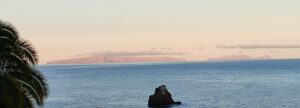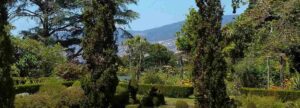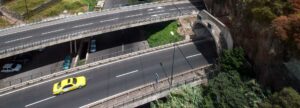The historical change of Madeira
1351: For the first time, the islands of the Madeira Archipelago appear on a Florentine nautical chart.
1418 – 1420: João Gonçalves Zarco and Tristão Vaz Teixeira take Madeira for Portugal's crown. The first settlers will soon follow.
1440 - 1455: Tristão Vaz Teixeira becomes legate captain of Madeira's east, João Gonçalves Zarco of Madeira's west. Wine is grown for the first time.
1479 - 1482: Christopher Columbus marries Felipa Moniz. They live in Porto Santo for a while, then in Madeira. Here Columbus receives crucial information for his later voyages of discovery.
1497: King Manuel I incorporated Madeira into the Kingdom of Portugal and declared Funchal the capital of the entire archipelago.
1508: Because of the sugar cultivation, Madeira becomes an important economic factor in Portugal and King Manuel I gives Funchal city rights.
1514: The Sé cathedral is inaugurated and becomes a bishopric.
1530: The Caribbean and Latin American colonies of Spain and Portugal are facing serious competition in the production of sugar.
1566: The French pirate Bertrand de Montluc and his corsairs attack Funchal and sack the city. Madeira's heyday is over.
1581 – 1620: Portugal and Madeira fall to Spain. English pirates attack Madeira again and again, and more fortifications are being built. The English pirate John Ward sacked Funchal on behalf of the Bey of Tunis and deported 1.200 people into slavery in North Africa.
1640: With the help of England, Portugal freed itself from the unpopular Spanish rule.
1662 - 1668: The Portuguese king's daughter Katharina von Braganza marries the English king Charles II. English merchants settle in Madeira and take over the wine trade. Portugal regains its national independence.
1703: Because of the Anglo-French war and the English wine embargo against France, Madeira becomes Europe's most important wine exporter.
1807 – 1814: Under Napoleon, the French occupy Portugal, the English station troops on Madeira. The British are increasingly settling on the island.
1852 - 1872: Cholera is raging in Madeira and around 7.000 people are killed. In addition, almost all vines in Madeira are first destroyed by the powdery mildew introduced from America and then by a phylloxera species. Many British wine merchants are leaving the island or switching to other branches of business.
1910 - 1931: Assassination attempt on the Portuguese king and proclamation of the republic in Portugal. Revolts and general strikes are militarily suppressed.
1932: Prime Minister Salazar establishes a dictatorial rule.
1949: Funchal and Southampton are connected by an airboat line.
1960 - 1964: Opening of the airport in Porto Santo. Opening of the airport in Madeira (Santa Catarina). Tourism is becoming an important industry.
1974: Carnation Revolution in Portugal against the dictatorship of Salazar and Caeta.
1976: As an autonomous region, Madeira has extensive rights of self-government.
1985: Extension of the airport runway. The number of passengers is increasing and tourism is booming. After the revolution, many middle-class hotels emerged. Now Madeira is no longer reserved for a small upper class.
1986: Portugal becomes a member of the EC.
1995: Another airport expansion is started. The airport building will be enlarged and the runway extended to 2.800 m.
2000: Inauguration of the airport's spectacular new runway and the cable car from Funchal to Monte.
2010: Heavy storms with floods and landslides hit the island in February. The area around Funchal was particularly affected.






